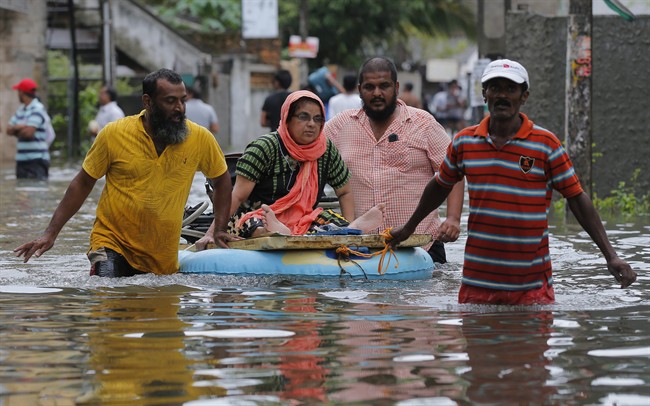QUITO, Ecuador – A powerful magnitude-6.7 aftershock early Wednesday rattled Ecuador near the Pacific coast area where a devastating earthquake hit a month ago, knocking out power and scaring still-traumatized residents as they slept but otherwise causing only limited damage.

The U.S. Geological Survey said Wednesday that the quake’s epicenter was 35 kilometres (21 miles) from the town of Muisne. It struck shortly before 3 a.m. local time and had a shallow depth of 32 kilometres below the earth’s surface.
President Rafael Correa said there was no tsunami alert and called on residents in Quito, where some residents poured into the streets, to return to their homes. The quake was strong enough to trigger a national disaster alert, but Correa deactivated the emergency response a few hours later when local authorities reported the situation was calm.
“These sort of aftershocks are normal but that doesn’t mean they’re not scary and can cause damage,” Correa said in a televised address, adding that aftershocks of this magnitude were normal for up to two months after a major quake like the one Ecuador experienced.
READ MORE: 8 killed, 8 still missing after floods, landslides in Sri Lanka
The president said that while some previously ravaged homes suffered more damage most had already been evacuated and no buildings had collapsed. There were no reports of fatalities and only a few light injuries from people who tripped and fell in the dark, he said. Authorities were working to restore power in affected areas.
The magnitude-7.8 earthquake on April 16 Ecuador’s worst natural disaster in decades, killing 661 and leaving more than 28,000 people homeless. It has been followed by hundreds of aftershocks, at least five of them including Wednesday’s which measured 6.0 or higher on the Richter scale.
Ecuador was already struggling economically before the April disaster. Correa has hiked taxes to fund the recovery but says it will take years to rebuild the beach towns and tourist hubs levelled by the quake.
Jorge Zambrano, mayor of Manta, one of the areas hit hardest by last month’s big quake, said streets were calm.
“It was a big shake and all of us were scared but there are no major problems at the moment,” said Zambrano.
—
AP Writers Joshua Goodman in Bogota, Colombia and Al Clendenning in Madrid contributed to this report.



Comments